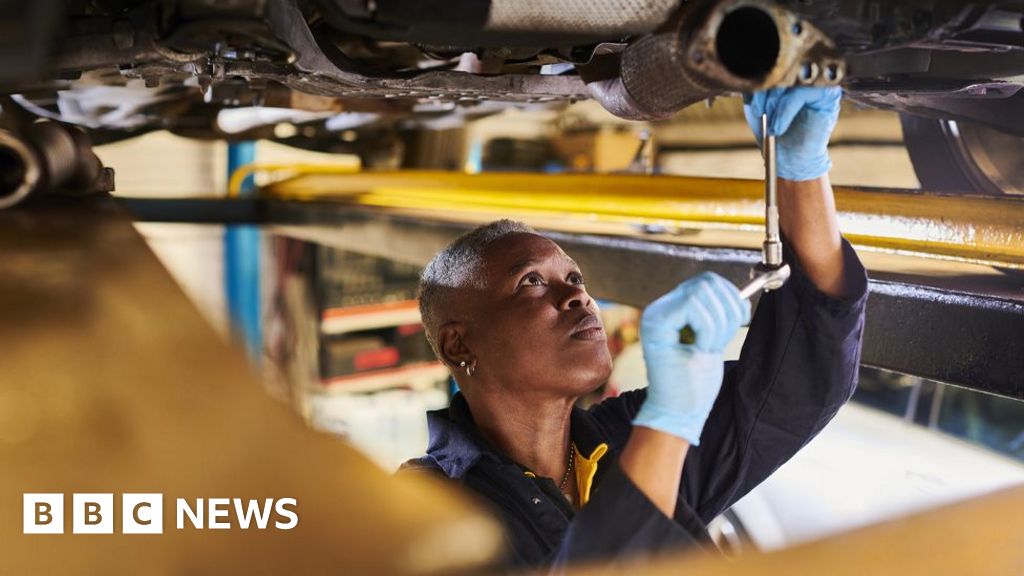ARTICLE AD BOX
 Image source, Getty Images
Image source, Getty Images
By Michael Race & Faarea Masud
Business reporters, BBC News
The cost of regulated rail fares in England will rise by up to 4.9% from Sunday.
The jump is likely to be unwelcome for rail passengers, adding to the rising cost of living seen in recent years. It also comes at a time when passengers have faced disruption to services due to strikes by rail workers over the past 18 months.
Traditionally, fares are hiked based on July's retail prices index measure of inflation, which in 2023 was 9%, plus an additional 1%.
However, the increase in fares has been capped below this rate, and is lower than last year.
Regulated fares cover about 45% of fares, including season tickets on most commuter journeys, some off-peak return tickets on long-distance journeys and anytime tickets around major cities.
For example, if the 4.9% increase is applied, an annual season ticket from Brighton to London would jump £275 to £5,891, while one from York to Leeds would go up £135 to £2,899.
While some people may have tried to buy their season tickets just before the price rise, here are five tips for getting the cheapest deals at any time of the year.
1. Buy in advance
Advance train tickets are usually released up to 12 weeks before your departure date, although some go on sale as far as 24 weeks in advance.
These types of tickets are often the cheapest way to travel on the railways if you're happy to go during a fixed time. Sometimes they can be available to buy up to an hour before your journey.
Personal finance website Money Saving Expert says that London North Eastern Railway (LNER) often releases advance tickets up to six months ahead for routes from stations north of York to London.
Some ticket purchasing apps can send alerts to your phone as soon as tickets for a specified journey go on sale.
2. Split your fare
Split ticketing means you can take the same number of trains you normally would for your journey, but can save money by splitting your journey into multiple tickets between the stations the service stops at on the way.
Some websites like Split My Fare and Split Train Tickets do it for you without you having to work it out.
Split My Fare says on average, customers save 26% by doing this - although it's not always possible on some journeys.
Also, checking to see whether it is cheaper to buy two single tickets rather than a return might save you money.
3. Use a rail card
Rail cards can offer discounts when booking, though they cost money to purchase in the first place, so benefit those who travel often.
There are several types of rail card available: national, regional, those for students and those for pensioners.
For example, the 16-25 Railcard costs £30, is valid for one year and gives you one third off each ticket you buy.
More information on the different types of railcard are here.
4. Travel in groups
You can get up to a third off the ticket price when travelling in groups of three to nine adults off-peak.
The group must be travelling together, and individual rail cards cannot be used when booking a group ticket.
Groups of over 10 people can also get discounts - contact the train company directly for those. Group off-peak day travelcards for London are also available, but the origin station on the ticket needs to be in fare zones one to nine.
5. Take advantage of flexible commuting
National flexible rail tickets could save passengers hundreds of pounds, says watchdog Transport Focus.
The flexible season tickets will allow travel on any eight days in a 28-day period, with no need to select the days of travel in advance.
Train companies have also introduced a range of flexible tickets aimed at commuters and workers who have seen their travel patterns change post-pandemic.
The Flexi Season ticket will offer a minimum of 20% discount on an equivalent monthly season ticket, according to National Rail.
For those making the same journey multiple times in a week regularly, monthly or season tickets can be cheaper. Check with your employer to see if they offer a season ticket loan to help you spread the cost, interest free.

 8 months ago
62
8 months ago
62








 English (US)
English (US)